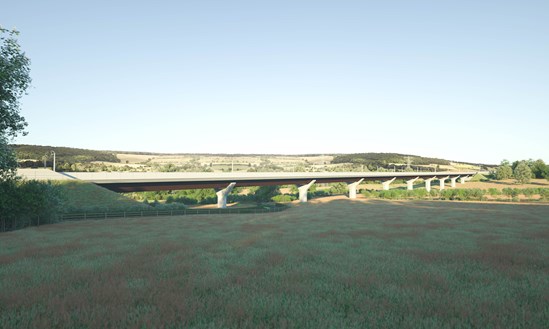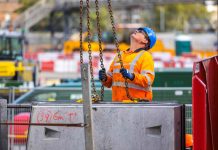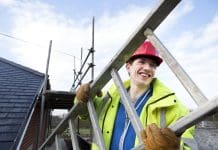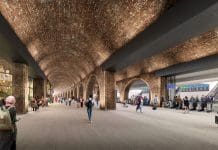HS2 designers are on track to more than half the amount of embedded carbon in one of the high speed rail project’s viaducts
The innovative ‘double composite’ approach – which involves two steel girders sandwiched between two layers of reinforced concrete to create a lightweight span – will be used on the Wendover Dean Viaduct in Buckinghamshire.
The 450m viaduct was recently given approval by Buckinghamshire Council under Schedule 17 of the HS2 Act and it will be the first major railway viaduct in the UK to use the ‘double composite’ approach.
Working in collaboration
Designed by HS2 Ltd’s main works contractor, EKFB – a team made up of Eiffage, Kier, Ferrovial and BAM Nuttall – working with their design partner, ASC and Moxon, the viaduct is one of 50 being built on the first phase of HS2 between London and the West Midlands.
As well as cutting the amount of concrete and steel – one of the major sources of CO2 – the slender design also reduces the silhouette of the structure viewed from across the valley. Nine evenly spaced piers will support the deck of the viaduct and will be placed to carefully reflect the near symmetry of the ground beneath.
The beams themselves will be made from weathering steel, which will age to a characteristically dark russet finish and echo the natural tones of the surrounding landscape.
When viewed from a distance, against the weathered steel, the pale concrete parapet will appear as a thin horizontal band hovering over the slender piers as it glides over the valley and make the whole structure look thinner.
This effect will be further emphasised by the viaduct piers, which have been extended to almost connect with the parapet, helping to give the appearance of a light and narrow structure.
The historic field boundaries and hedgerows will be recreated after the viaduct is built to provide uninterrupted access for farmers and local residents.
A mix of trees and shrubs commonly found across the Chiltern chalk hills will be used for new woodland planting around the viaduct, including Oak, Beech, Hazel and Wild Cherry.
EKFB’s technical director Janice McKenna, said: “This viaduct was inspired by the innovative design in France, but has been enhanced and developed in the context of the Chilterns.
“Our design solutions are always created with people and legacy in mind and I am really proud of the carbon savings that the Wendover Dean Viaduct represents.”

















